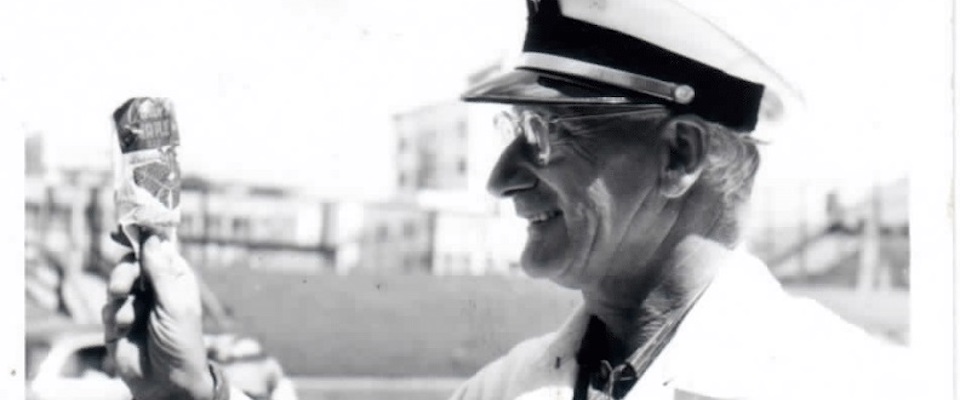Sather Gate is falling down. But not for long
Jim Horner walks into a conference room near his office, and with a heavy clank, plunks down a chunk of ornamented bronze on the table. “That was literally hanging by a thread,” he says. “If that had come off, it could have killed somebody.”
The piece on the table was once part of the Sather Gate, the arch leading from Sproul Plaza on the south side of campus. Needless to say, the gate has seen better days. In fact, you could say that it is coming apart at the seams.
Horner, the campus landscape architect, says falling bronzework is only one of the problems ailing the structure. In 2007, students from the UC Rally Committee were on a scissor-lift hanging blue and gold lights on the gate for the Cal-Stanford football game when several of them noticed the exterior metal had split along the sides and was rusted in the core. “I am not an engineer or a materials scientist, but I could tell someone needed to be informed about it,” says former committee treasurer Eddy Crochetiere. “Parts around the outside were all twisted and the insides were rotting out. The nameplate that says Sather Gate was nearly detached.”
Horner commissioned an engineering firm to inspect the gate. Its report stated that at least a quarter of the metal portions of the gate had “significant to severe corrosion.” In addition, more than half of the gate relied on joints that were compromised to some extent. Inside, the steel was rusted and warped, causing the bronze to bulge and the sides of the gate to split.
It’s no wonder that the Sather Gate is worse for wear. The year 2010 will mark its 100th year on campus, during which time it has seen very little upkeep.
Jane Sather commissioned the archway in 1909, around the same time she commissioned Sather Tower, better known as the Campanile. The designer, John Galen Howard, oversaw the building of much of the early campus. After toying with several monstrous, all-stone designs, Howard finally settled on the graceful bronze and granite configuration we see today. The original design featured panels representing the eight primary academic disciplines of the time: Agriculture, Architecture, Art, Electricity, Law, Letters, Medicine, and Mining. Howard had portrayed each discipline as a nude man or woman, but Sather requested he take them down after objections were registered by, among others, an anonymous vandal who stuck fig leaves on the offending bits. In the ’70s, the nudes were rescued from storage and reattached to the structure.
Today, the Sather Gate is one of the most photographed monuments on campus. It may seem odd then that it should have fallen into such disrepair with almost no one noticing, but Horner notes that, beyond rare special events when banners are hung from it, few people ever climb on the thing. Currently the Class of ’50 is spearheading efforts to refurbish the weathered arch. There are no firm estimates of the final cost, but Horner guesses that a million dollars is a pretty safe bet. According to the commissioned report, the bronze portion of the arch will have to be completely removed to expose the frame, and its low-grade steel must be replaced with modern stainless. The bronze laurel leaves will need to be tacked back on, but first they must be replicated for a part of the gate where they are missing.
In the meantime, Horner also wants to address the granite side posts—the ones featuring the once-controversial nudes. He fears they may be seismically unstable. “We don’t believe from looking at the old construction documents that there is reinforcement that runs from the columns down into the bridge abutments,” he says. “From what we’ve seen they just go down 18 inches and that’s about it.” That’s not a lot of support for a giant bronze structure, and Horner plans to take the opportunity to stabilize them underground.
It’s not clear when the work will start. The Class of ’50 wants to get all work done by 2010 in time for the gate’s centennial and is raising money through a website at www.savesathergate.org. Vice Chancellor Edward Denton says the administration welcomes the donations but isn’t going to wait for a gift. He says he is already requesting money from the University. “It’s not going to fall down tomorrow, but I do want to fix it.”
The most important thing, he says, is that the work be finished by May 2010. If preparations are finished soon, Denton says the retrofit could begin this year. If not, expect work to get underway in July 2009. Until then, enjoy strolling under the historic campus landmark. Just watch your head.




















